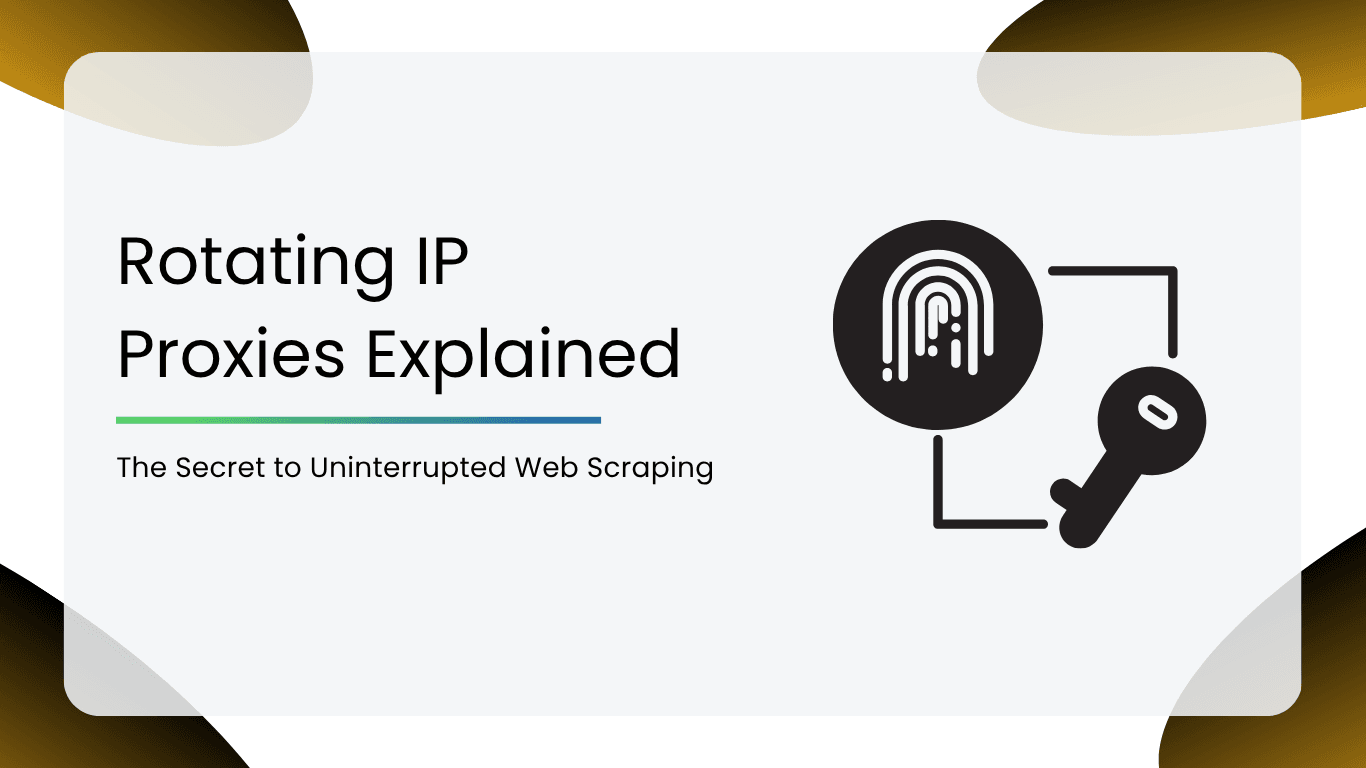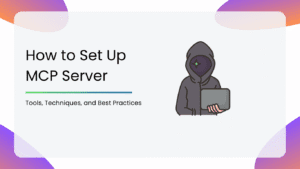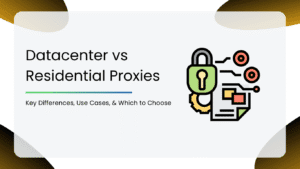Web scraping is like mining for digital gold; data powers everything from business intelligence to market research and competitive analysis. That’s where rotating IP proxies come in for smooth, uninterrupted scraping.
In this article, we’ll break down what rotating IP proxies are, how they work, and why they’re essential for anyone serious about web scraping.
What are Rotating IP Proxies?
Rotating IP proxies are servers that automatically change your IP address after each request. Every time you send a new request to a website, it appears as if it’s coming from a different user, not from the same computer.
This rotation process helps disguise your activity, making it look organic and random instead of automated. As a result, you can collect data smoothly without triggering anti-scraping defenses or getting your IP blacklisted.
Rotating proxies constantly switch between multiple IPs, often pulled from a massive pool of residential or data center addresses. This keeps your scraping activity anonymous, undetectable, and steady, even when handling thousands of requests.
How IP Rotation Works?
Most rotating proxies switch IPs after every request. That means each time your scraper asks a website for data, it looks like a completely new user visiting the site. This approach is perfect for large-scale scraping because it keeps your activity looking natural and reduces the risk of getting blocked.
But sometimes, you might need a bit more consistency. That’s where sticky sessions come in. Sticky sessions let you keep the same IP for a set duration or for a specific number of requests. This is handy if a task requires staying logged in, accessing a user-specific page, or completing multi-step processes without changing your IP too often.
Some providers also offer geo-targeting, letting you choose IPs from specific locations. This can be critical for scraping region-specific content, like localized pricing, search results, or localized ads.
Types of Rotating Proxies
Depending on your scraping needs, you’ll want to choose the type that balances speed, anonymity, and cost. Here’s a breakdown of the most common options:
| Proxy Type | Speed | Anonymity | Ideal For |
| Datacenter | High | Low | Quick, low-risk scraping |
| Residential | Medium | High | Avoiding blocks, high-volume scraping |
| Mobile | Low | Very High | Ultimate stealth, sensitive sites |
| ISP | Medium to High | Medium to High | Balanced scraping with decent speed & anonymity |
Key Benefits of Using Rotating Proxies
Here’s a clear, benefit-first look at what they let you do and why they matter:
1. Avoid CAPTCHAs and IP Bans
By switching IPs frequently, your requests don’t look like one aggressive bot spamming a site from a single address. That reduces the chance of CAPTCHAs, blocks or blacklisted IPs, so your scraper keeps running.
2. Enable Large-Scale Web Scraping Safely
Rotation spreads load across many IPs, lowering detection risk and letting you scale without constantly fighting site defenses.
3. Bypass Geo-Restrictions
Rotating proxies with geo-targeted IPs let you appear as users from the exact country, city, or ISP you need.
4. Manage Multiple Social or eCommerce Accounts
Running several accounts from one IP can flag you. Rotating proxies let each account connect via different IPs, reducing the chance of cross-account bans and making multi-account workflows safer.
5. Strengthen Anonymity & Data Privacy
Rotation masks your origin and makes traffic patterns look organic. That not only helps avoid blocks but also protects your infrastructure and data collection processes from easy attribution.
6. Support Load Testing & Ad Verification
Rotating proxies let you generate realistic, distributed traffic and check how content appears to different audiences.
How to Use Rotating Proxies Effectively
Here’s how to choose a reliable, long-running scraper:
1. Choose a Reliable Proxy Provider
- Match Proxy Type to the Job: If you need speed, datacenter should be your pick. For stealth, you can choose residential or mobile. A balanced option would be ISP proxies.
- Check Pool Size & Churn: Bigger pools with frequent IP churn reduce reuse and risk of blocks.
- Look for Features You’ll Actually Use: Geo-targeting, sticky sessions, backconnect nodes, easy authorization, and clear rate-limit rules.
- Support & SLAs Matter: When an IP pool degrades, quick provider support saves time.
2. Set the Right Rotation Frequency
- Per-Request Rotation: It is safest for large-scale scraping where every request should look like a different user.
- Timed Rotation/Sticky Sessions: Use when you need session continuity. Sticky sessions might hold an IP for N seconds or N requests.
- Tune for the Target Site: Aggressive sites need faster rotation and lower request rate; more lenient sites allow slower rotation and bigger batches.
- Respect Request Pacing: Rotation alone isn’t a free pass. Combine it with polite delays and randomized intervals to mimic human behavior.
3. Integrate Proxy Endpoints Into Your Scraping Stack
- Proxy Types & Protocols: Most providers support HTTP(S) and SOCKS5. Use whatever your scraper library handles.
- Centralize Proxy Handling: Use a proxy manager or a small wrapper in your scraper that swaps proxy credentials/endpoints between requests.
- Advanced: Use a backconnect endpoint that handles rotation for you, or an API that returns a fresh proxy per call.
4. Track Performance & Rotate Smartly to Avoid Detection
- Monitor Key Metrics: Success rate, latency, error codes, and CAPTCHA frequency.
- Implement Retry & Blacklist Logic: If an IP returns repeated errors, quarantine it completely and switch IPs.
- Adaptive Rotation: Slow down or increase rotation if error rates spike. Use exponential backoff for retries.
- Log Everything: Store which IP hit which URL and when. It helps diagnose blocks and prove you weren’t hammering a single endpoint.
- Use Realistic Headers & Behavior: Rotate User-Agents, use reasonable referer headers, randomized sleep times, and avoid identical patterns.
Comparison Table of Top 5 Rotating Proxy Providers in 2025
| Provider Name | Rotation Options | Geo-Targeting Precision | Ideal Use Cases |
| Decodo | Per request, sticky sessions | Country, city, ASN | App testing, data scraping, multi-account management |
| Bright Data | Per request, sticky sessions | Country, city, ASN | Large-scale web scraping, enterprise data collection |
| SmartProxy | Auto rotation, sticky sessions | Country, city, ASN | Market research, ad verification, price monitoring |
| NetNut | Per request, sticky sessions | Country, city, ASN | SEO monitoring, brand protection, data aggregation |
| Proxy.cc | Per request, sticky sessions | Country, city, ASN | E-commerce scraping, social media management |
Top 5 Rotating Proxy Providers in 2025
Choosing the right rotating proxy provider is crucial. Here’s an overview of top providers in 2025:
| Table of Contents |
| 1. Decodo |
| 2. Bright Data |
| 3. SmartProxy |
| 4. NetNut |
| 5. Proxy.cc |
1. Decodo
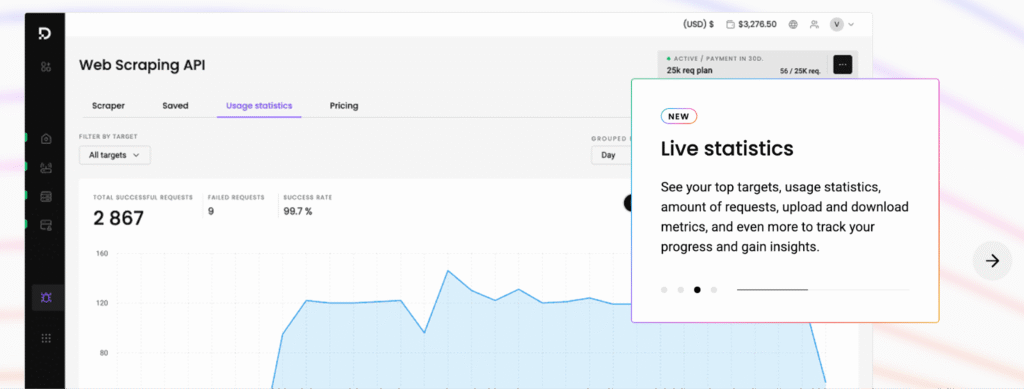
Decodo has evolved into a comprehensive data access and automation platform, maintaining its reputation for providing high-quality, affordable rotating proxies. Their services are designed for seamless integration with various scraping tools and automation platforms, ensuring efficient data collection processes. Decodo’s user-friendly interface, combined with flexible session controls and robust support, makes it a reliable choice.
2. Bright Data
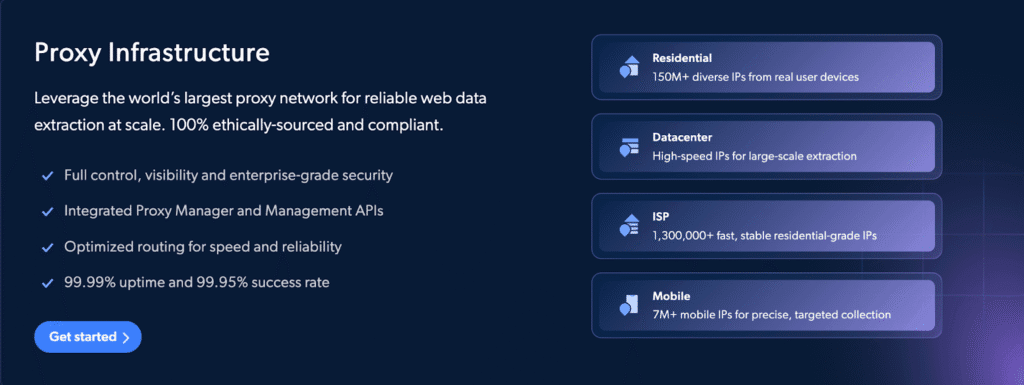
Bright Data is widely recognized for its massive rotating proxy network, covering residential, datacenter, mobile, and ISP IPs across nearly every country. Its strength lies in advanced rotation logic that allows seamless IP switching per request or session, making large-scale web scraping more reliable and less prone to blocks. With precise geo-targeting and sticky session options, Bright Data ensures that users can access region-specific content, maintain session continuity when needed, and collect data efficiently when staying anonymous.
3. SmartProxy
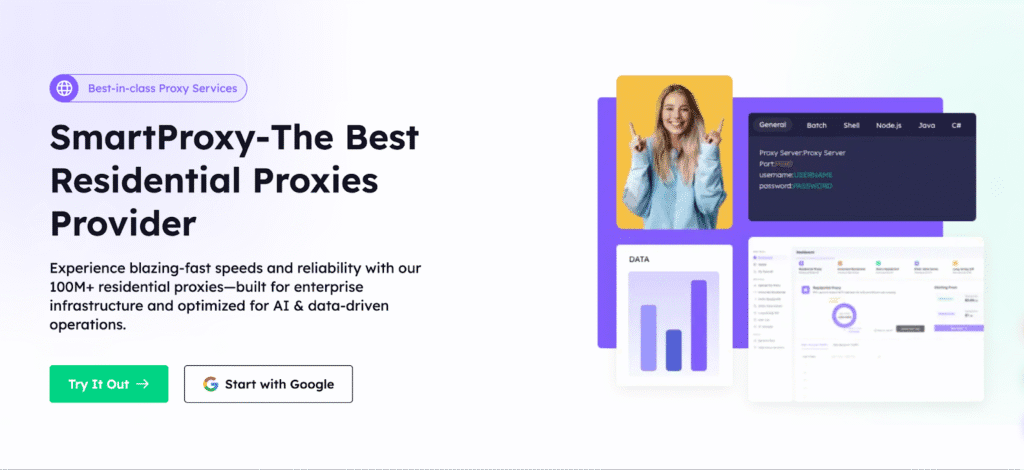
Smartproxy offers a robust rotating proxy service with over 100 million ethically sourced residential IPs across more than 200 locations worldwide. This extensive network ensures high anonymity and reliability, making it suitable for various tasks. The service supports both rotating and sticky sessions, allowing users to choose between dynamic IP changes and maintaining a consistent IP for a set duration. Smartproxy’s user-friendly interface and flexible pricing models cater to both individual users and enterprise clients.
4. NetNut
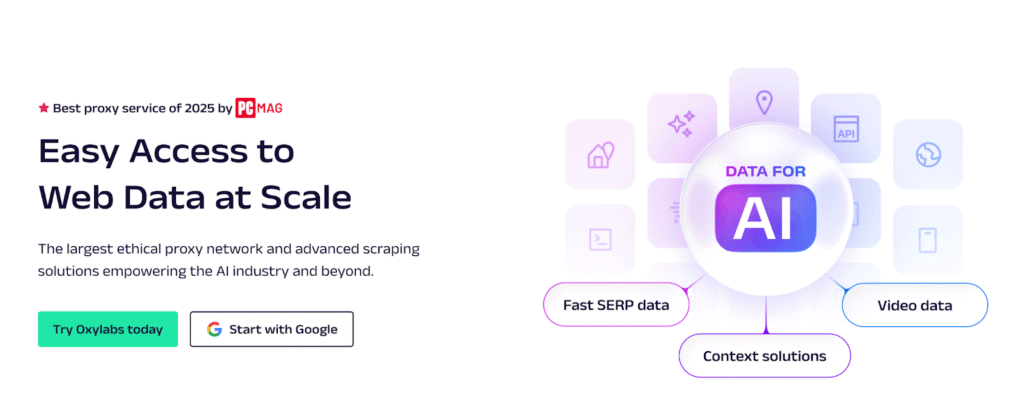
NetNut leverages direct ISP connections instead of relying solely on residential IPs, which provides faster and more stable proxy performance. Their rotating proxies are designed for high-volume, uninterrupted scraping, with optional sticky sessions for tasks that require a consistent IP. NetNut’s platform emphasizes low-latency access and minimal downtime, making it suitable for both enterprise-grade projects and smaller-scale automation tasks, while giving users precise control over session duration and geographic targeting.
5. Proxy.cc
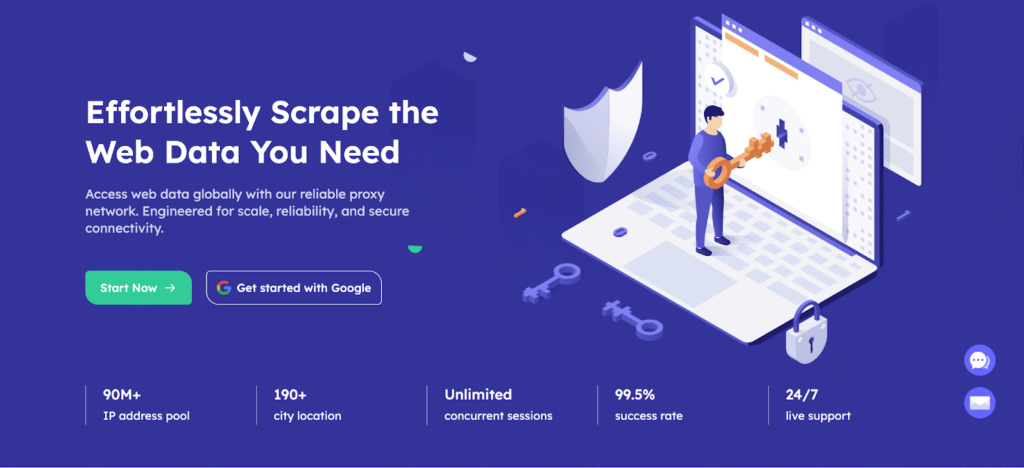
Proxy.cc offers a vast pool of over 90 million real residential IPs across more than 190 countries, ensuring high anonymity and reliability. Their service supports both rotating and sticky sessions, allowing users to choose between dynamic IP changes and maintaining a consistent IP for a set duration. Proxy.cc’s user-friendly interface and flexible pricing models cater to both individual users and enterprise clients, providing scalable solutions for diverse proxy needs.
Free vs Paid Rotating Proxies
| Feature | Free | Paid |
| Connection Reliability | Often unstable; frequent timeouts and disconnections | High uptime with consistent, monitored performance |
| Security & Encryption | Usually unencrypted; exposes data to interception | Encryptted connections with secure data transfer |
| IP Reputation | Shared by many users; high risk of blacklisting | Ethically sourced, verified IPs with low abuse rates |
| Speed & Reputation | Slower due to server overload and limited bandwidth | Optimized speed with balanced load distribution |
| Anonymity Level | Low; easier to detect and block | High; advanced rotation logic ensures stealth |
| Geo-Targeting Options | Limited or no control over IP location | Precise targeting by country, city, or ASN |
| Support & Maintenance | No customer support or reliability guarantees | 24/7 technical support, regular updates, SAL-backed |
| Use Case Suitability | Suitable only for testing or low-scale scraping | Ideal for large-scale secure, and automated scraping |
Choosing the right type of proxy and pairing it with a trustworthy provider ensures maximum uptime and data accuracy. While free proxies may seem convenient, paid solutions offer the security, reliability, and advanced features necessary for professional scraping. In short, mastering rotating proxies is the secret to uninterrupted, scalable web scraping, helping you to extract insights with confidence and efficiency.
If you want to learn more about proxy solutions, check out our other blogs:
- Best Proxy Servers for Cyber Security in 2025
- Best Proxy Servers for Gaming in 2025
- Best Private Proxies in 2025
- Best Shared Proxies in 2025
FAQs
Most providers give you a rotating proxy endpoint. Just plug it into your code or scraping tool. In Python, use the requests library; in Selenium or Scrapy, add proxy middleware or extensions like Scrapy-Proxy-Pool. The provider handles the rotation automatically.
Rotating proxies are legal if used ethically, like for SEO, research, or price tracking. Avoid scraping sites that ban it in their Terms of Service, and always follow robots.txt rules to stay compliant.
Check speed (latency), uptime, and block rate. Use tools like ping or proxy testers for quick checks. If you notice slow or blocked requests, switch IP pools or tweak your rotation settings.
Absolutely. Use datacenter proxies for speed and residential or mobile proxies for tougher sites needing higher anonymity. A hybrid setup balances cost, stealth, and reliability.
Disclosure – This post contains some sponsored links and some affiliate links, and we may earn a commission when you click on the links at no additional cost to you.

